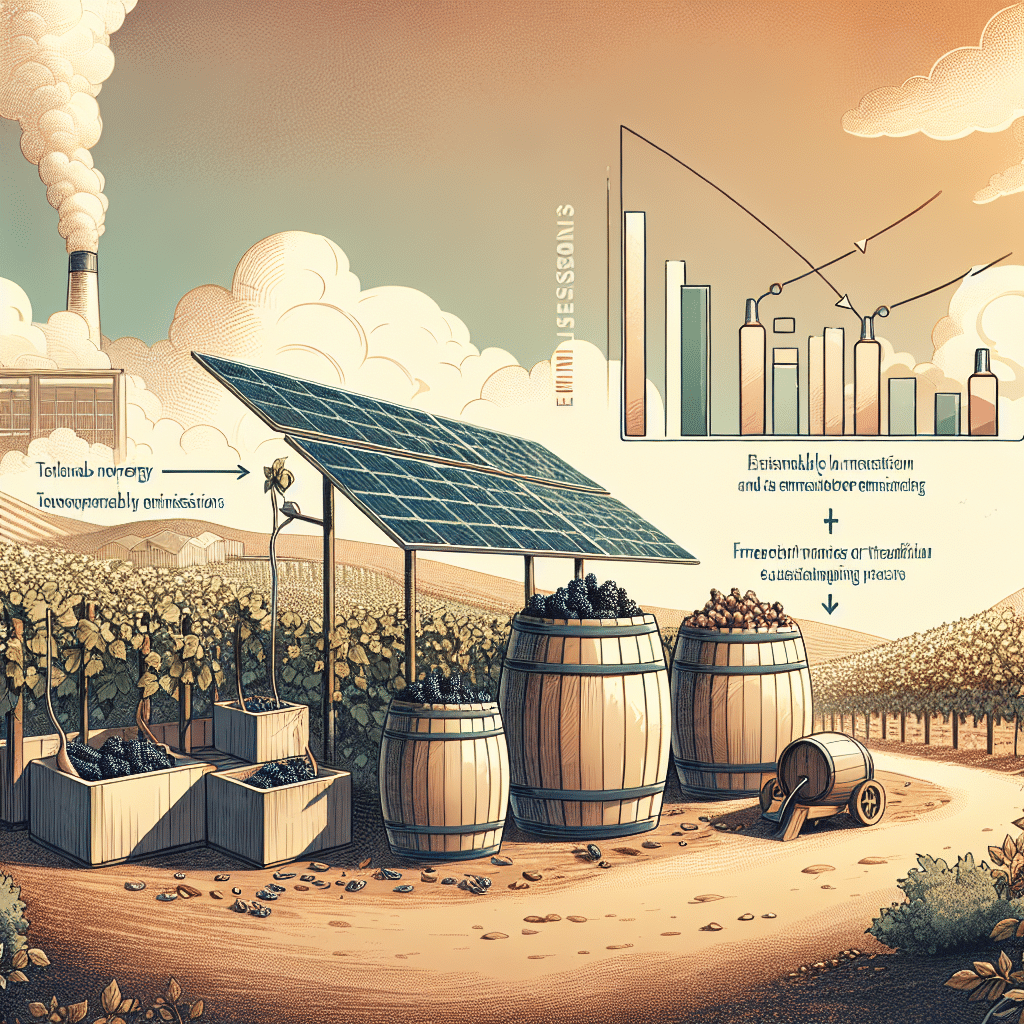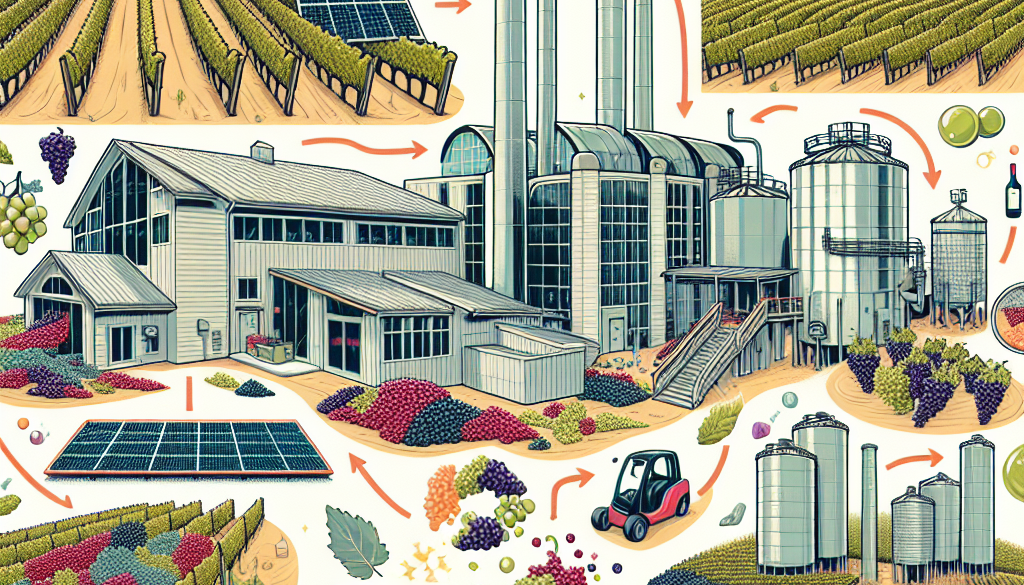Wine:Some Opportunities to Emit Less
-
Table of Contents
- Wine Production: Strategies for Reducing Carbon Emissions
- Understanding the Carbon Footprint of Wine
- Opportunities for Vineyards to Reduce Emissions
- Winemaking Innovations to Lower Carbon Emissions
- Logistics and Distribution: A Path to Greener Wine
- Consumer Choices and Market Demand
- Case Studies and Success Stories
- Challenges and Considerations
- Conclusion: The Future of Sustainable Wine
- Enhance Your Health with ETprotein’s Sustainable Protein Products
Wine Production: Strategies for Reducing Carbon Emissions

The wine industry, celebrated for its rich heritage and artisanal craftsmanship, is also becoming increasingly aware of its environmental footprint. As climate change continues to be a pressing global issue, winemakers and vineyard owners are exploring opportunities to reduce carbon emissions and make the wine production process more sustainable. This article delves into the various strategies that can be employed within the wine industry to achieve lower carbon emissions, ensuring that the beloved practice of viticulture contributes positively to the planet’s health.
Understanding the Carbon Footprint of Wine
Before diving into the opportunities for emission reduction, it’s essential to understand where and how carbon emissions occur in the wine industry. From vineyard operations to packaging and distribution, each step of the process contributes to the overall carbon footprint. For instance, the use of fossil fuels in agricultural machinery, the production of bottles and packaging materials, and the transportation of wine to consumers worldwide are significant sources of emissions.
Opportunities for Vineyards to Reduce Emissions
- Adopting Sustainable Viticulture Practices: Vineyards can implement organic farming techniques, reduce the use of chemical fertilizers, and employ cover crops to enhance soil health and sequester carbon.
- Energy Efficiency: Transitioning to renewable energy sources such as solar or wind power for operations can significantly cut down on greenhouse gas emissions.
- Water Conservation: Implementing efficient irrigation systems and water management practices helps reduce the energy required for water pumping and treatment.
Winemaking Innovations to Lower Carbon Emissions
- Lightweight Bottling Solutions: Using lighter glass bottles or alternative packaging materials can reduce transportation emissions.
- Waste Management: Recycling water and repurposing grape pomace for compost or bioenergy can minimize waste and associated emissions.
- Carbon Capture Technologies: Innovative technologies that capture and reuse CO2 produced during fermentation can help mitigate emissions.
Logistics and Distribution: A Path to Greener Wine
- Optimizing Transportation: Efficient routing, combined shipments, and the use of low-emission vehicles can reduce the carbon footprint of wine distribution.
- Local and Bulk Shipping: Encouraging local consumption and bulk shipping methods, such as using large containers for transport and bottling closer to the market, can also decrease emissions.
Consumer Choices and Market Demand
Consumers play a pivotal role in driving change within the wine industry. By opting for wines with a lower carbon footprint, such as those with eco-friendly packaging or those produced by wineries with sustainable practices, consumers can influence market demand and encourage more wineries to adopt greener methods.
Case Studies and Success Stories
Several wineries around the world have successfully implemented measures to reduce their carbon emissions. For example, a winery in California has achieved a 33% reduction in carbon emissions per bottle by installing solar panels and using lighter bottles. Another winery in France has become carbon neutral through a combination of energy efficiency, renewable energy, and carbon offsetting projects.
Challenges and Considerations
While the opportunities for emission reduction are plentiful, the wine industry faces challenges such as the cost of implementing new technologies, the need for industry-wide collaboration, and the balance between tradition and innovation. It’s crucial for the industry to address these challenges collectively to make significant progress toward sustainability.
Conclusion: The Future of Sustainable Wine
The wine industry has the potential to become a leader in sustainability by embracing opportunities to emit less. Through a combination of innovative practices, technological advancements, and consumer awareness, wineries can significantly reduce their carbon footprint while preserving the quality and tradition of their products. The key takeaways for the industry include the importance of sustainable viticulture, energy efficiency, waste management, and green logistics. By prioritizing these areas, the wine industry can contribute to a healthier planet and ensure the longevity of its cherished craft.
Enhance Your Health with ETprotein’s Sustainable Protein Products
As the wine industry works towards sustainability, consumers can also make eco-friendly choices in other aspects of their lives, such as their dietary protein sources. ETprotein offers a range of organic, non-GMO, allergen-free vegan proteins that are not only good for your health but also kind to the planet. With products like Organic rice protein, pea protein, and various seed proteins, ETprotein provides sustainable protein options that align with a greener lifestyle.
About ETprotein:
ETprotein, a reputable protein and L-(+)-Ergothioneine (EGT) Chinese factory manufacturer and supplier, is renowned for producing, stocking, exporting, and delivering the highest quality organic bulk vegan proteins and L-(+)-Ergothioneine. They include Organic rice protein, clear rice protein, pea protein, clear pea protein, watermelon seed protein, pumpkin seed protein, sunflower seed protein, mung bean protein, peanut protein, and L-(+)-Ergothioneine EGT Pharmaceutical grade, L-(+)-Ergothioneine EGT food grade, L-(+)-Ergothioneine EGT cosmetic grade, L-(+)-Ergothioneine EGT reference grade and L-(+)-Ergothioneine EGT standard. Their offerings, characterized by a neutral taste, non-GMO, allergen-free attributes, with L-(+)-Ergothioneine purity over 98%, 99%, cater to a diverse range of industries. They serve nutraceutical, pharmaceutical, cosmeceutical, veterinary, as well as food and beverage finished product distributors, traders, and manufacturers across Europe, USA, Canada, Australia, Thailand, Japan, Korea, Brazil, and Chile, among others.
ETprotein specialization includes exporting and delivering tailor-made protein powder and finished nutritional supplements. Their extensive product range covers sectors like Food and Beverage, Sports Nutrition, Weight Management, Dietary Supplements, Health and Wellness Products, and Infant Formula, ensuring comprehensive solutions to meet all your protein needs.
As a trusted company by leading global food and beverage brands and Fortune 500 companies, ETprotein reinforces China’s reputation in the global arena. For more information or to sample their products, please contact them and email sales(at)ETprotein.com today.












